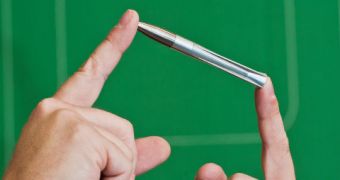A team of experts at the DOE Sandia National Laboratories (SNL) have announced the development of a prototype bullet that can guide itself towards a target located up to a mile (1.6 kilometers) away.
The entire design is based on an innovative use of light-emitting diodes (LED) and associated electronics, SNL investigators Red Jones and Brian Kast say. They worked closely together with several of their colleagues in order to bring this design to life.
The self-guided bullet looks just like a dart, and is designed specifically for use with small-caliber weapons that have a barrel without rifling. These are called smoothbore weapons. The new bullet only works together with a laser designator.
This design has already been patented, and the SNL experts are currently looking for a private company willing to get involved with developing this technology even further. In the long run, the lab plans to get the new bullet to the market.
“We have a very promising technology to guide small projectiles that could be fully developed inexpensively and rapidly,” Jones says. Initial computer simulations and field tests were all successful, which is impressive considering that the bullet was built from parts already available on the market.
“We’re confident in our science base and we’re confident the engineering-technology base is there to solve the problems,” the expert adds, saying that the engineering problems still ahead will most likely be fixed very soon.
The basic design of the 4-inch (10.1-centimeter) bullet revolves around the optical sensor in its nose. This component is responsible for detecting the laser beam on the target. The data it collects are then sent to an 8-bit CPU that moves electromagnetic actuators via guidance and control electronics,
Tiny fins on the surface of the bullet then change their orientation, allowing for in-flight trajectory corrections. Jones explains that the rifling on the barrel had to go in order to make it easier for the fins to change the path of the bullet; this would have been very difficult with a spinning bullet.
Unlike other bullets, which tend to “go to sleep” over great ranges, this one actually improves its accuracy the farther away the target. This is due to its forward-sitting center of gravity, which enable the fins to exert smooth control over how the entire bullet flies.
“Nobody had ever seen that, but we’ve got high-speed video photography that shows that it’s true,” Jones concludes.

 14 DAY TRIAL //
14 DAY TRIAL //